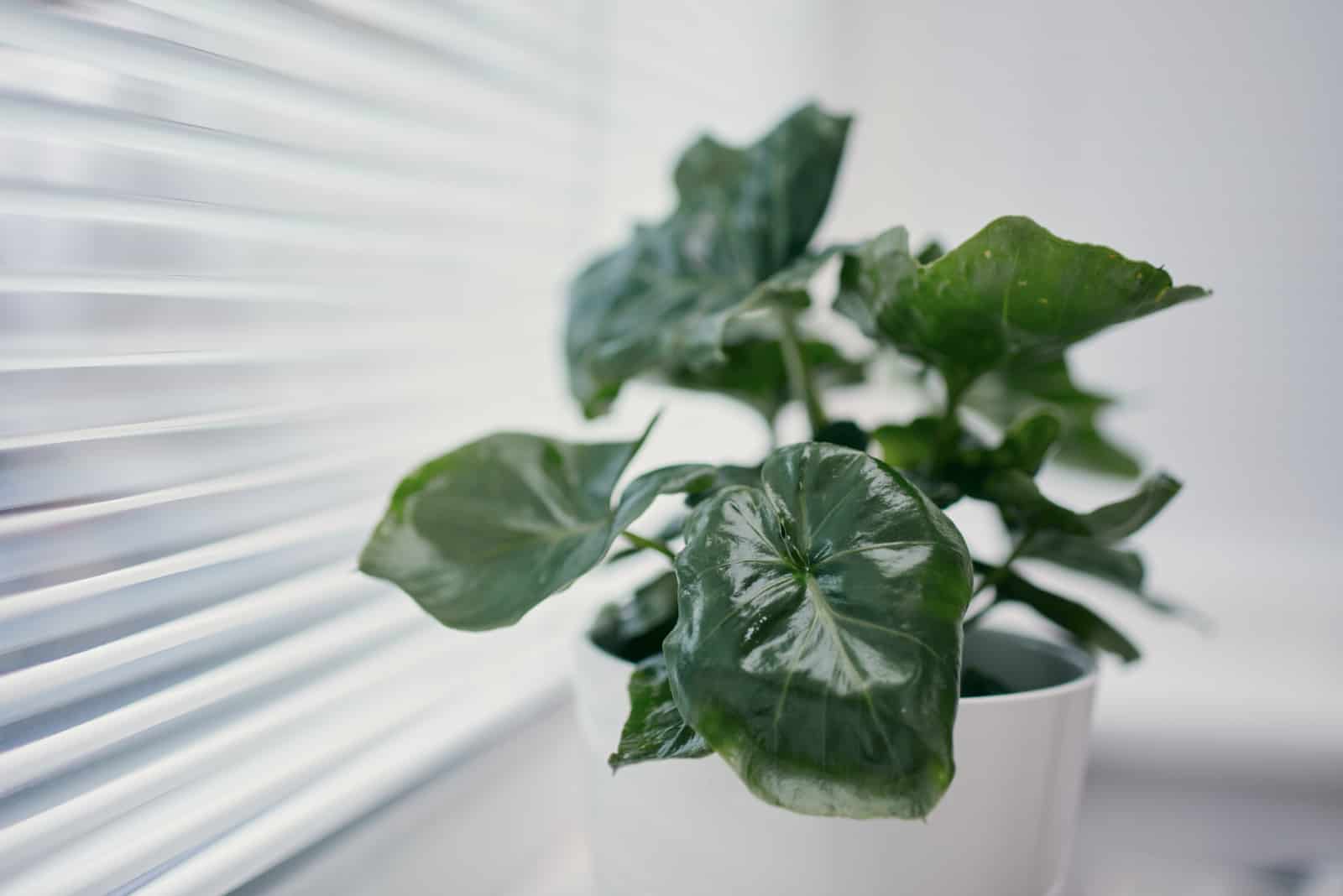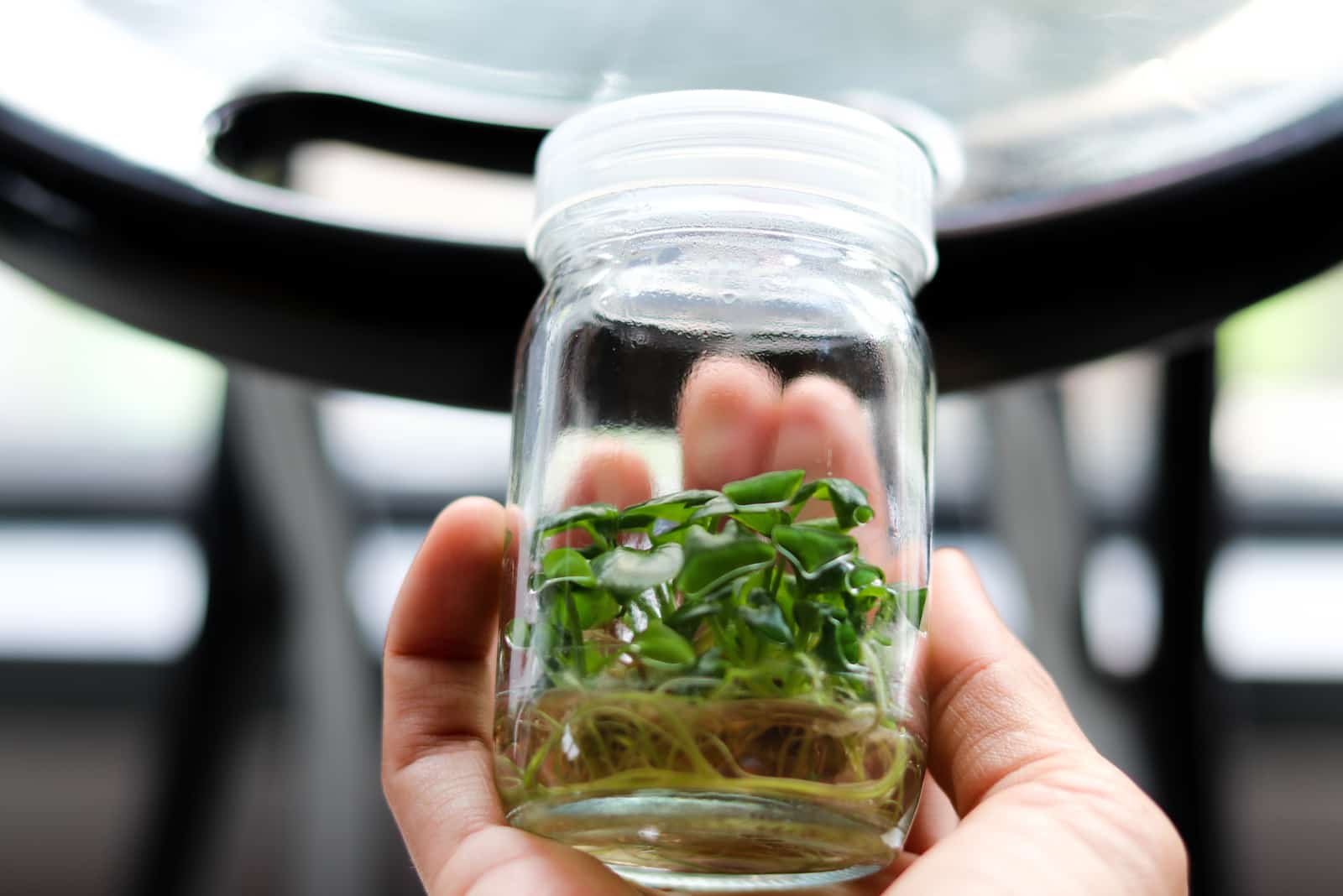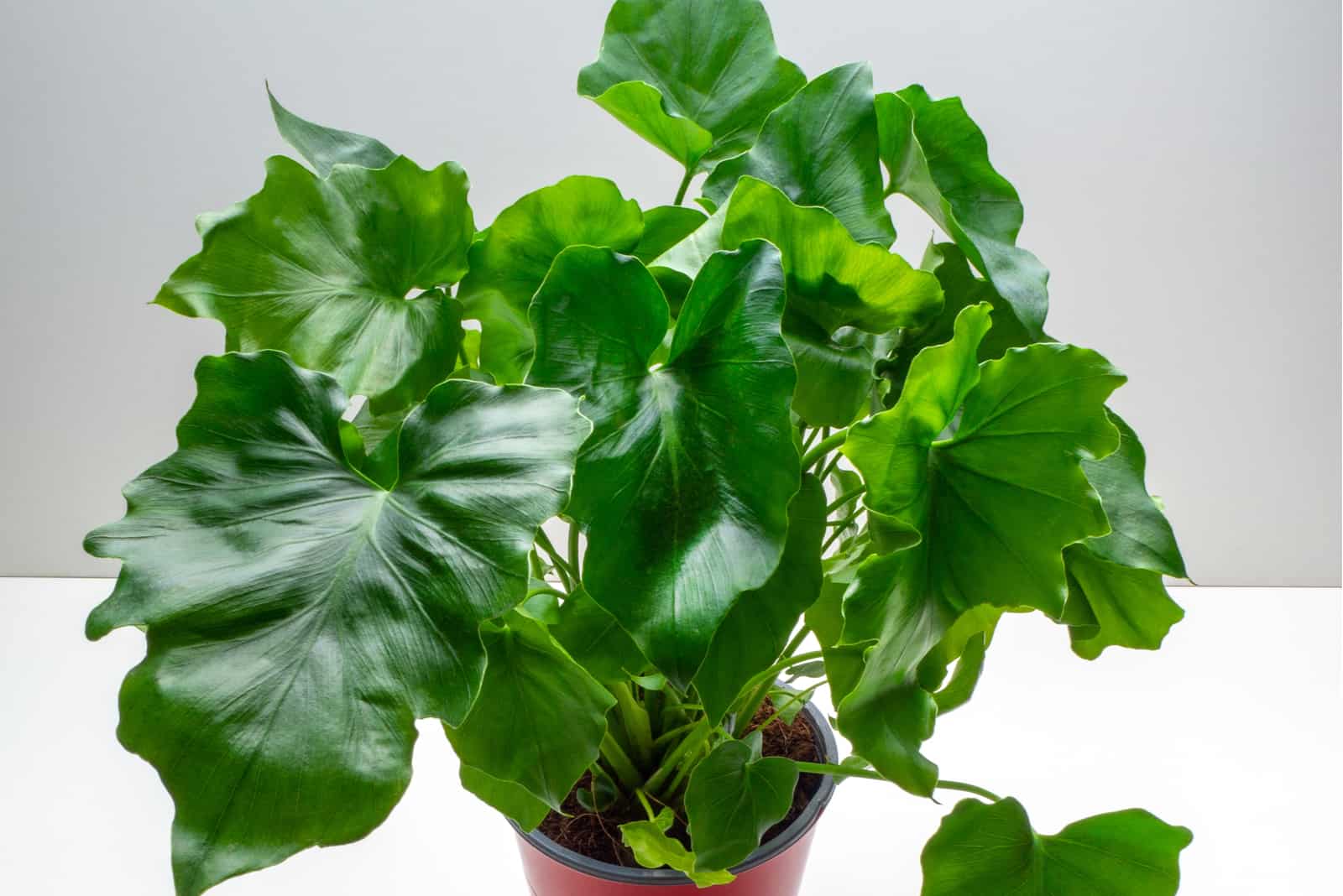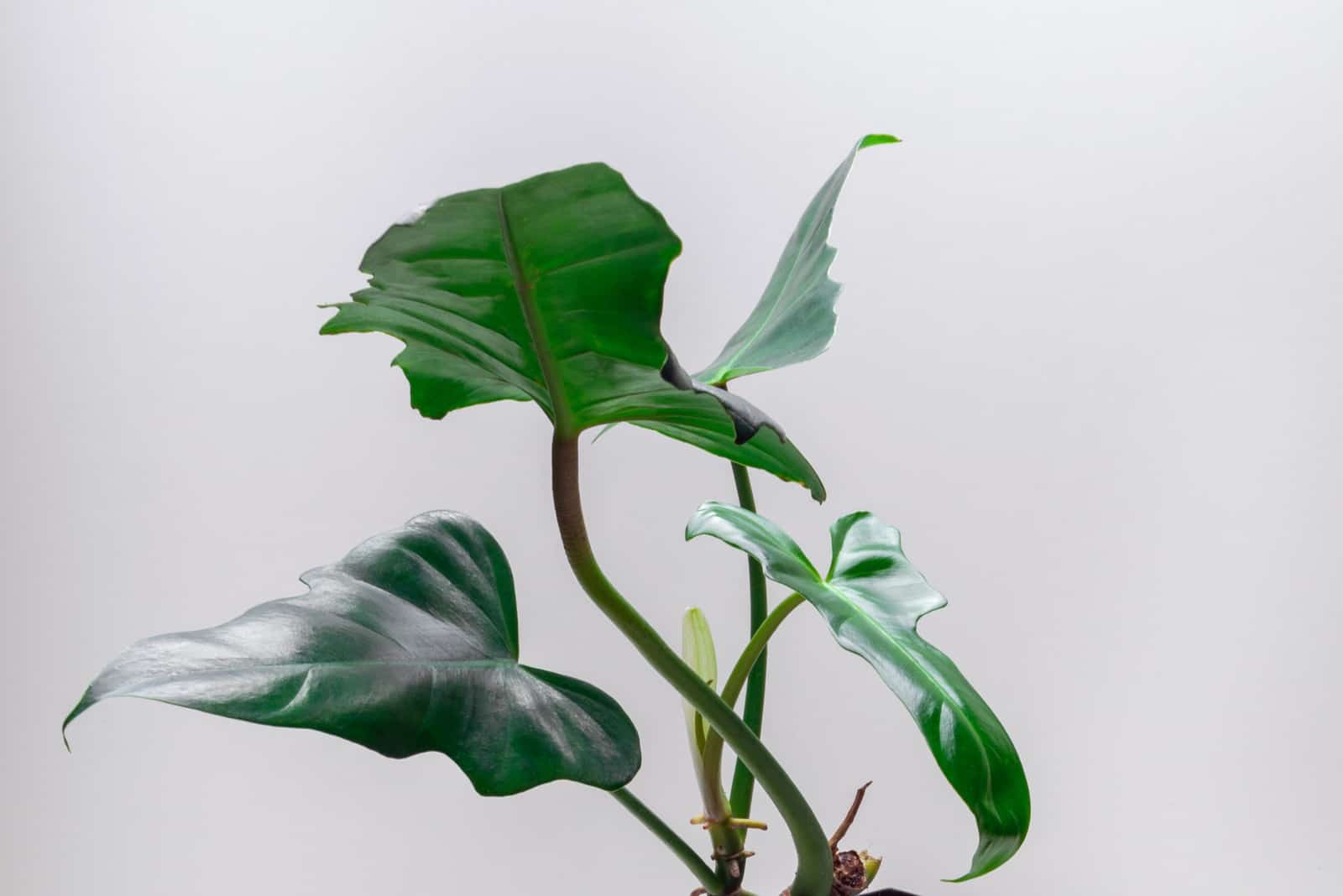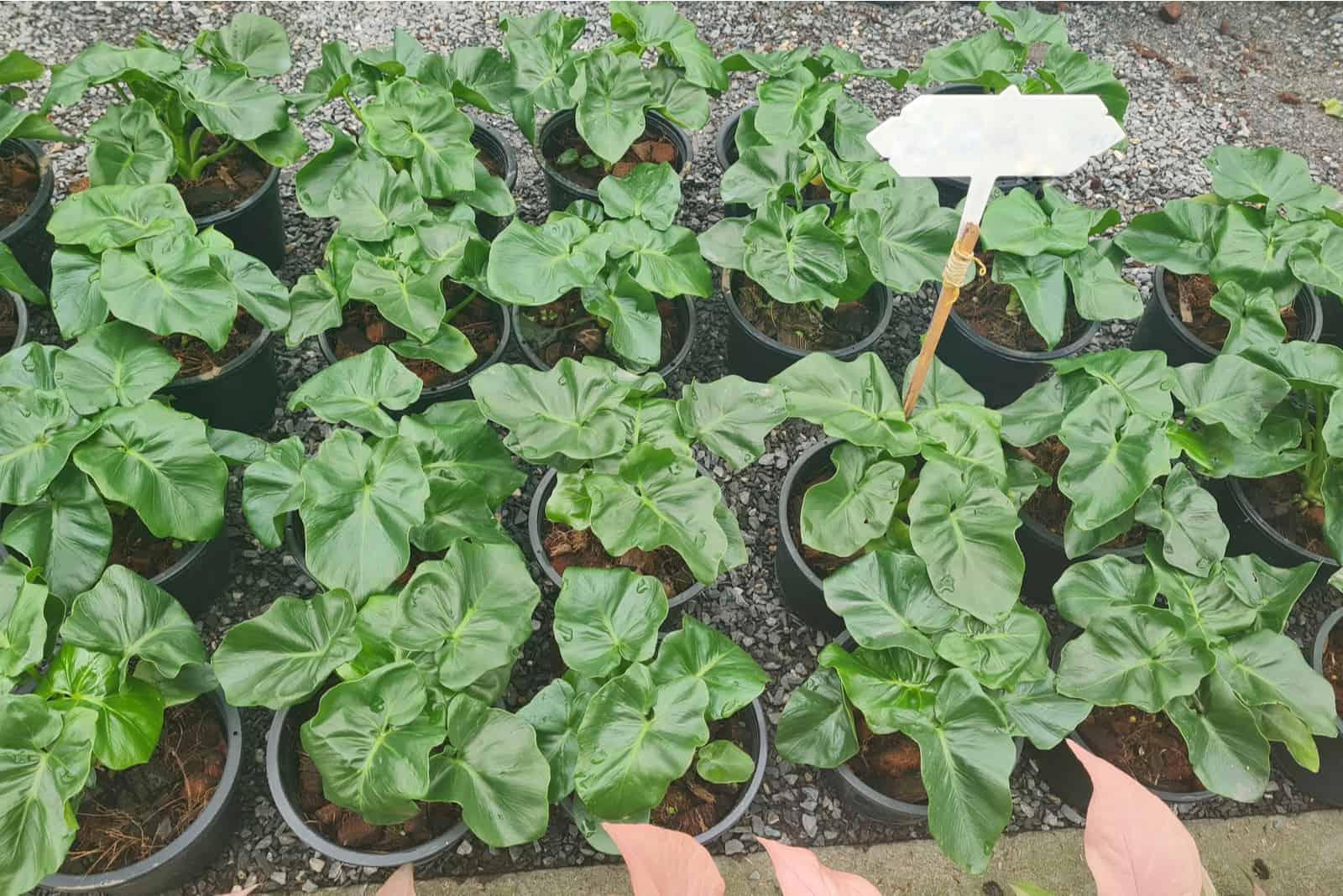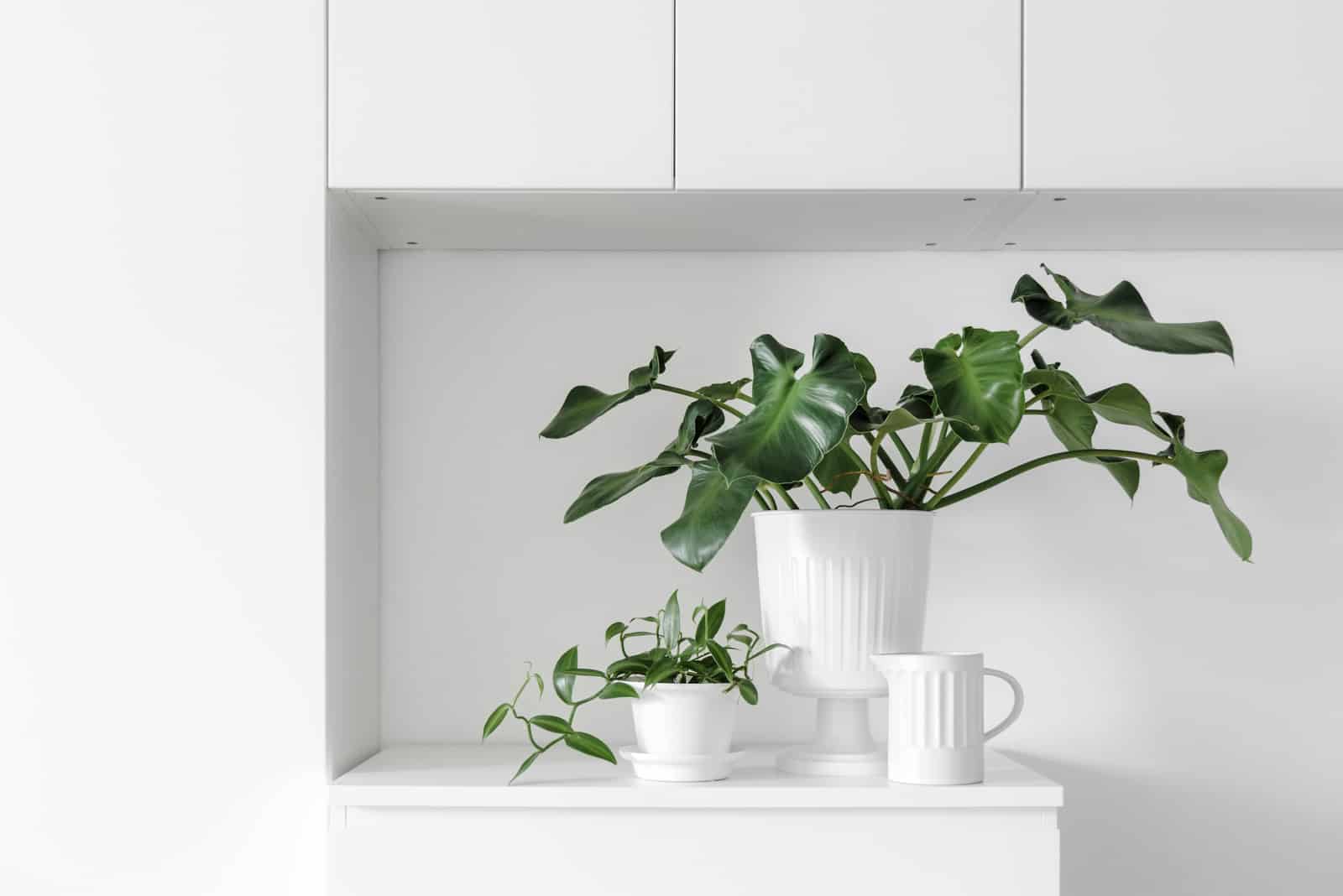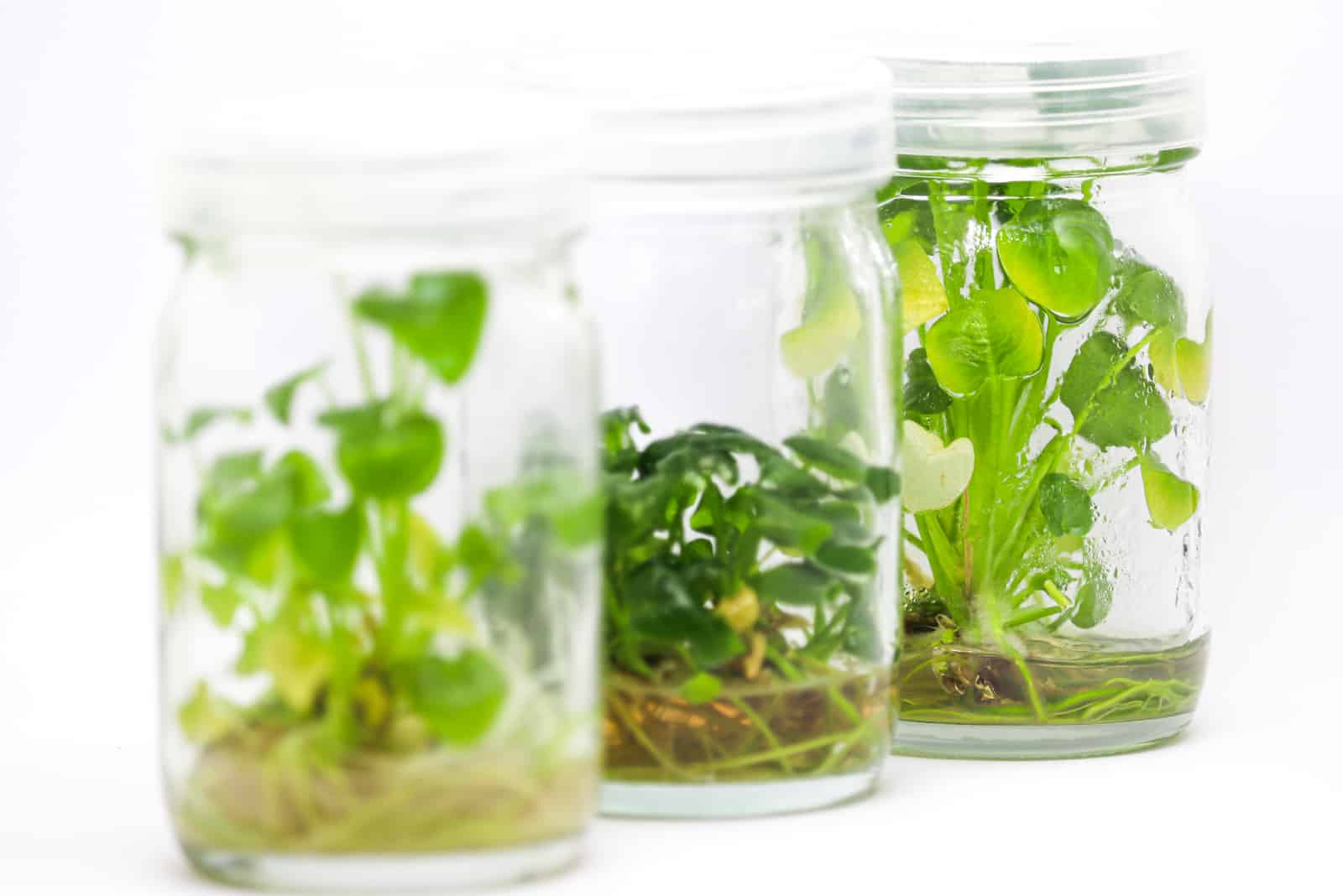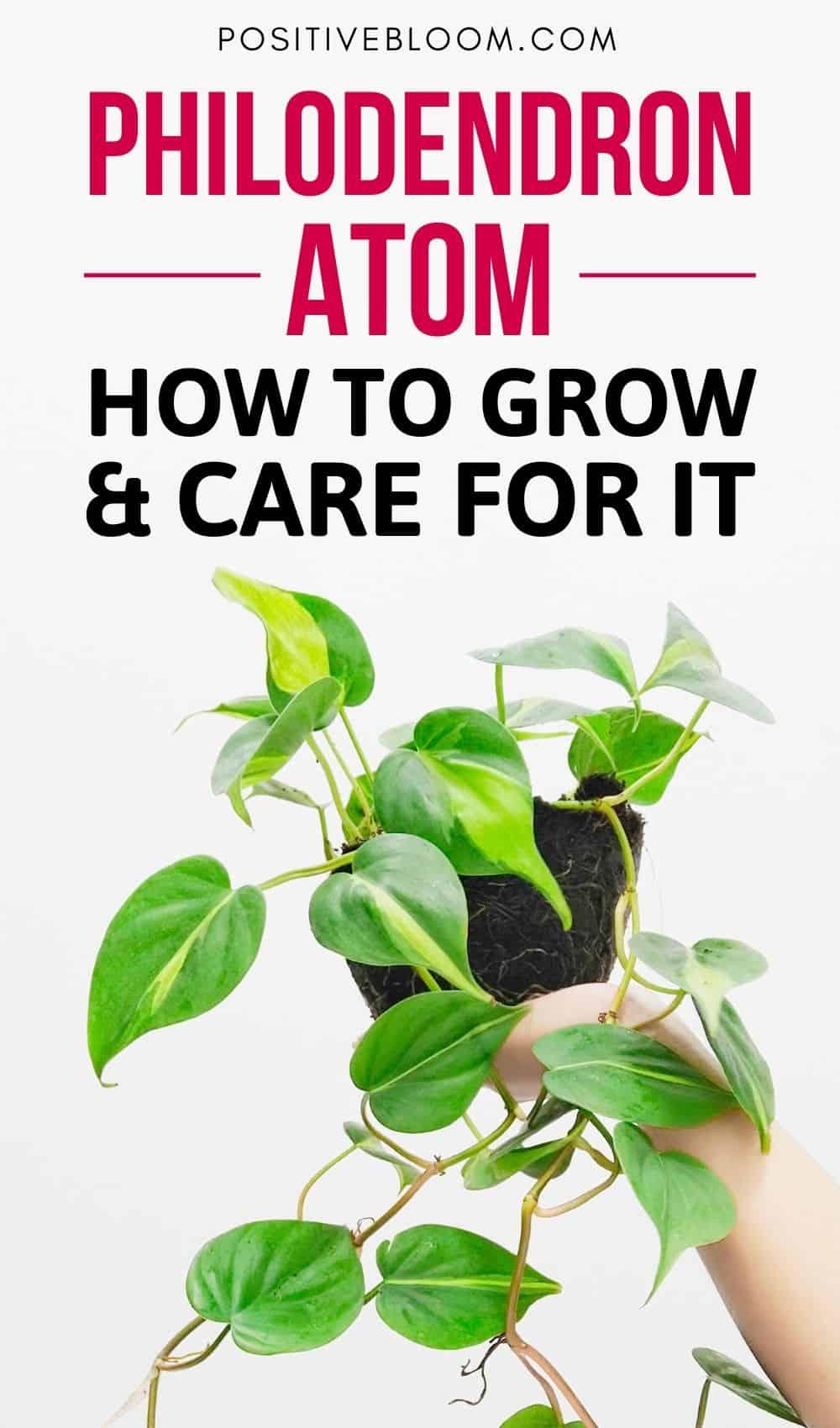The Philodendron Atom is native to subtropical rainforests in Brazil and Paraguay, and is a part of the genus of family Araceae.
Its growth depends on various conditions such as lightning, temperature, and humidity, and its proper care includes watering, fertilization, pruning, choosing the right potting soil mix, and repotting.
This is a low maintenance plant, which is why many growers that are beginners often choose it to be a part of their living room.
The deep green curly leaves with high gloss of the atom plant give it a stunning appearance.
Although it looks like a Thaumatophyllum bipinnatifidum, which is now classified as Philodendron Selloum, this is a different house plant and as such requires slightly different growing conditions.
Nasa research has shown that this plant is an air purifier, meaning that it removes formaldehyde from the air, which is another great reason to get one of these plants for yourself.
This fantastic house plant will both improve the decor of your house and the air quality!
How To Grow a Philodendron Atom
The growth of this house plant depends on the three main conditions: lighting, temperature, and humidity.
Caring for Philodendrons isn’t hard; read on to find out how you can provide the best conditions possible to ensure the healthy growth of this plant.
Lighting Conditions
As previously mentioned, Philodendron Atom plants are sub-tropical plants.
This may suggest the need for more light, but it’s important to bear in mind that sub-tropical plants grow under the rainforest canopy, so they aren’t actually exposed to much direct sunlight.
Even though the atom plant can grow in low light, it’s better to use bright indirect light so the plant can grow faster and healthier.
Place the Philodendron Atom close to a south facing window for best results.
This way, the plant will get some direct sunlight during sunrise, which won’t harm the plant because it will spend the rest of the day in indirect sunlight.
Light Meter
Of course, if you want to make sure that your atom plant always receives enough light, you can use a light meter.
You can use either an incident or reflected light meter. The difference is that the incident light meter has a lumisphere – a little white ball which, when exposed to light, shows the light level. On the other hand, reflected light meters are integrated into cameras to measure light.
An interesting fact is that Philodendron Atom Plants respond well to fluorescent light, so if you want to get one for your office, it will grow just fine!
Observe the plant, and if you notice any changes to the leaves, be sure to check your light levels.
Temperature Conditions
This plant requires higher temperatures due to its native habitat.
It’s important to keep the temperature between 70 to 80°F.
The maximum temperature the Philodendron Atom can withstand is 85°F.
Although these houseplants can grow in lower temperatures, don’t let the temperature drop below 55°F so as to avoid any damage to the way the plant looks.
Heat increases moisture requirements, so it’s important to keep the plant away from any heat sources.
This includes radiators and fireplaces.
It’s also important to keep the plant away from air conditioners and vents.
This is an indoor plant, so putting it in the right place will really help it to thrive.
Humidity Level
This plant is native to rainforests, so you should do your best to imitate these conditions in your home.
Perfect humidity levels range between 55 to 60%.
Pay close attention to moisture levels to avoid any complications.
The moisture level in kitchens and bathrooms is higher, so either would be a great place for a philodendron atom plant.
If the humidity level is lower than it should be, you can increase it using a humidifier.
Mist the leaves to maintain their curly gloss leaves.
You can also increase moisture levels in the pot’s soil by using a pebble tray.
You can make your own pebble tray by filling a tray with water, adding pebbles, and placing the pot over the top of the tray.
Keep the plant away from air conditioners and vents because they dry out the air and reduce the humidity level.
Where Is The Best Place For The Philodendron?
Put the plant in a place with bright indirect light, close to an east facing window.
Direct light could cause sunburn on the leaves.
You can use curtains if you can’t avoid direct sunlight.
Don’t expose your atom plant to heating sources like radiators and fireplaces. Avoid air conditioners and vents because they dry out the air and reduce humidity levels.
A great place for your atom plant could also be the kitchen or bathroom due to their higher humidity levels.
Read on to discover how best to take care of a Philodendron Atom after you have found a perfect place for it.
Philodendron Atom Care
In order to avoid any unnecessary complications, it’s important to take proper care of your atom plant with proper watering, fertilizer, pruning, adequate potting soil mix, and repotting.
Watering
The best watering schedule for this indoor plant is once a week during spring and summer, and every two weeks during fall and winter.
Use a watering can to pour water over the top of the soil.
If the potting soil is wet, wait until it dries at least two inches down.
Be careful not to overwater it because it could cause root rot and yellow leaves.
If you water the leaves, it may cause them to turn yellow because leaves do not absorb water in philodendrons.
4 Tips For Watering
1. If you can’t decide whether the soil has had enough water, put your finger in the soil to inspect the moisture levels.
2. During summer, wait until the potting soil completely dries out to avoid accidental overwatering.
3. Water it less during winter and fall, and bear in mind that during these months the need for nutrients provided by watering decreases because the plant doesn’t use as much energy.
4. Water over the soil’s pot and be sure to avoid watering the leaves.
Compared to other house plants, philodendron atom plants don’t need much water.
Stick to the watering schedule to avoid overwatering and ensure you are giving the atom plant all the nutrients it needs.
Fertilization
In order to maintain healthy growth and green leaves, you should fertilize the plant every four weeks during spring and summer, and just a couple of times during fall and winter.
It’s best to stick to a standard fertilizer for philodendrons.
Atom Plant food should be enriched with calcium, potassium, phosphorus, magnesium, and nitrogen.
The Liquid Plant Food
It’s best to use liquid plant food for fertilization.
This is because it is easier to apply due to its slow release and because the atom plant doesn’t need much fertilization, so you don’t need to use slow release pellets.
Slow release pellets are more commonly used for plants that need more regular fertilization.
If you add too much fertilizer to the tips of the leaves, they will turn brown.
If you follow the instructions on the fertilizer and stick to the fertilization schedule, it will definitely accelerate growth and help your atom plant to thrive.
Pruning
If you notice an infection on the leaves you should prune the infected leaves away.
You might be surprised to find out that your philodendron atom doesn’t need pruning, apart from in the case above. This makes this plant even easier to maintain!
Potting Soil Mix
Choosing the right potting soil mix is another important part in caring for an atom plant.
The potting mix should include pebbles, pumice, coco coir, and sphagnum moss.
Add extra perlite and peat moss to really help your atom plant thrive.
Choose well-draining soil. You can improve drainage if you use a pot that has drainage holes. Perlite and peat moss also improve drainage.
You can also add cactus or succulent mix.
The required pH level is above 7 (alkaline pH). Ground limestone can be used as a natural way to increase pH in the soil.
Repotting
Philodendron Atoms should be repotted every other year.
The best indicator to repot are the roots. If the roots poke out of the drainage holes, it’s time to repot, so it may end up being more often than every other year.
If you are wondering which pot size to use when repotting, use a pot that is only a few inches bigger.
Larger pots need more soil, and because philodendron atoms are relatively small plants just like Philodendron Deja Vu, their roots will have too much soil surrounding them if the pot is too big. The more soil, the higher the moisture level, which leads to root rot.
When repotting, water the plant the day before. Take the plant out using your hands, and gently shake off the roots. Leave half of the soil on the roots and place the roots in fresh potting soil so that the two soils mix. Press the soil down a little bit so that you prevent air spaces.
Propagation Of Philodendron Atom By Cutting
I am sure you are pleased with the fact that you can propagate your Philodendron Atom plant. The propagation process is relatively simple if you follow the steps below.
How To Propagate By Cutting in 4 Steps:
Another great thing about the Philodendron Atom plant is that you can propagate it from cuttings.
Here’s how:
1. Take a clean and sterile knife and cut off a stem. Make sure that it has a couple of nodules. Only take stems that have leaves on them as the leaves will be needed for energy absorption in the new growth.
2. Place the cuttings in new soil. You can either use a small container or a large glass jar filled with water as a place for the new soil.
3. Choose somewhere with indirect light for the container or jar.
4. Wait for about two weeks and then check the roots. If the roots are long enough (a few inches) you can replant.
Pay attention to the following:
• Make sure that the atom plant absorbs enough nutrients by watering the soil every day before you start propagation.
• There is no need to take the plant out of the pot because you will cut stems with nodules.
Water your new plant according to the watering schedule for the Philodendron Atom plant.
Philodendron Atom vs Philodendron Super Atom
The biggest difference between a Philodendron Atom and Philodendron Super Atom is the size.
The Philodendron Super Atom is a dwarf cultivator. That means it is smaller.
Another difference is in their leaves.
The edges of the Philodendron Atom’s leaves are slightly wavier than the leaf edges of the Philodendron Super Atom.
Are Philodendrons Toxic?
Yes, this philodendron is toxic just like Philodendron Warscewizckii, and Philodendron Dark Lord; philodendrons are toxic due to the presence of calcium oxalate in the leaves.
The Philodendron’s toxicity is the reason you must keep young children and pets away from the plant by keeping it far out of their reach.
Philodendrons aren’t dangerous unless ingested. Young children and pets are unaware of the consequences, so they could ingest the leaves without realizing the danger.
Ingesting leaves can cause nausea and swelling of the lips, mouth, and throat.
Remember to always remove every fallen leaf or petal from the floor.
Common issues
There are certain issues that may occur with the philodendron atom. By observing its roots and leaves you will be able to recognize if something is wrong.
Root Rot
Root rot is primarily caused by overwatering.
Take the plant out of the pot and inspect the roots. If they smell unpleasant and the soil has a mushy appearance, you might have overwatered your atom plant
Overwatering will cause wet soil on the Philodendron, rendering it more susceptible to diseases caused by pathogens.
One of the most common pathogens is fungus, which decomposes the root tissue.
Excess water will be consumed by fungus, which causes root rot.
This is one of the reasons both pot size and a pot with drainage holes are so important.
Extra soil will retain more water and prevent the atom plant from absorbing the nutrients it needs.
Root rot removal
If you notice root rot, wash the roots immediately and remove the infected roots. Then put the plant in fresh potting soil.
Some other root rot removal methods include soaking the roots in a mix of water and hydrogen peroxide, and soaking the soil in a mix of bleach and water.
Lighting, temperature, and humidity levels greatly affect the atom plant’s drainage system, so adjust them according to the needs explained in the “How to grow Philodendron Atom” section.
Pests
Common pests that may affect philodendron atom plants are aphids, spider mites, scales, and mealy bugs.
Aphids can be found on stems and leaves. When it comes to leaves, aphids prefer the undersides. These sap-sucking insects group together on the stem. You can tell aphids are present if you notice honeydew on your plant.
You can get rid of Aphids using natural methods. Use neem oil or horticultural oils. If you are not sure that these will help, try using insecticidal soap.
Spider mites will cause the appearance of tiny spots on the leaves that can be either brown or white.
Scale insects look like shell bumps. Similarly to Aphids, they mostly appear on the undersides of leaves.
Mealy bugs cause cotton-like changes to the plant. These bugs are tiny and white and they are easily spotted.
Pest Removal
By using rubbing alcohol or dish soap, you can easily get rid of mealy bugs. Mix alcohol with dish soap and spray it over the mealy bugs.
You can get rid of Aphids using natural methods. Use neem oil or horticultural oils. If you are not sure that these will help, try using insecticidal soap.
You can get rid of spider mites using a mixture of alcohol and water. Dip a cloth in the mixture and gently rub the leaves. You can also use dish soap. Mix it with water, dip in a cloth, and gently rub the leaves with it.
Use rubbing alcohol for the removal of scales. Dip either a soft sponge or swab in the rubbing alcohol and rub gently.
By using rubbing alcohol or dish soap, you can easily get rid of mealy bugs. Mix alcohol with dish soap and spray it over the mealy bugs.
Leaves turn yellow or drooping
Leaves usually turn yellow because of overwatering. If you’ve checked whether the plant is overwatered, and it isn’t, check the quality of the potting soil and drainage system.
An Atom plant will lose its leaves if the lighting, temperature, or humidity levels don’t meet its requirements. You may first notice yellow leaves, and if you don’t react they could eventually droop.
If you notice that the edges of the leaves have become brown with yellow aureoles, your plant might have bacterial leaf spot disease. Leaves will droop when the germs reach the petioles.
If the leaves have some dark green-colored blotches, your plant might be facing the bacterial blight, philodendron selloum.
When the leaves are affected by bacteria, the best solution is to remove any contaminated leaves and stems.
Be careful, and always use sterile potting mix.
FAQs
What is the meaning of “philodendron atom”?
Philodendron atom consists of three Greek words, phileo-to love, dendron-tree, and atom-uncuttable.
What is the scientific name for the philodendron atom?
The scientific name for the Philodendron Atom is Thaumatophyllum bipinnatifidum.
Wrapping Up
Now that you’ve discovered everything you need to know about the Philodendron Atom, you’re well equipped to deal with any complications which may occur, and even if they do, you’ll be able to fix them in no time!
Make sure the Atom has everything it needs, and it will be thriving in no time!
Until next time!
Like this post? Please share or pin it for later!

